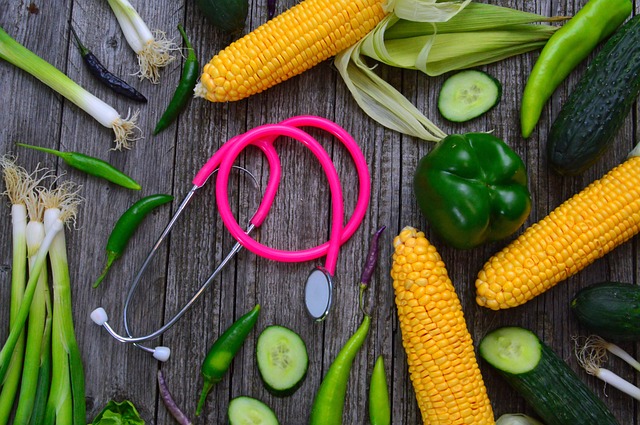Food is one of life’s greatest pleasures, but for individuals with food allergies or intolerances, it can also be a source of stress and uncertainty. Whether you’re managing your own dietary restrictions or supporting someone else, navigating food allergies and intolerances requires knowledge, planning, and adaptability. With the right strategies, however, it’s entirely possible to enjoy safe, nutritious, and delicious meals while avoiding potential triggers.
Understanding Food Allergies vs. Food Intolerances
Before diving into solutions, it’s important to distinguish between food allergies and food intolerances, as they are often confused but fundamentally different:
- Food Allergies:
Food allergies involve an immune system response to a specific food protein. Even small amounts of the allergen can trigger symptoms ranging from mild (e.g., hives, itching) to severe (e.g., anaphylaxis, which can be life-threatening). Common allergens include peanuts, tree nuts, shellfish, eggs, milk, soy, wheat, and fish. - Food Intolerances:
Unlike allergies, food intolerances do not involve the immune system. Instead, they occur when the body has difficulty digesting or processing certain foods, leading to uncomfortable symptoms like bloating, gas, diarrhea, or headaches. Lactose intolerance (inability to digest lactose in dairy) and gluten sensitivity (non-celiac) are common examples.
While both conditions require careful attention, food allergies demand stricter avoidance due to their potential severity.
Why Navigating Food Allergies and Intolerances Can Be Challenging
Living with food allergies or intolerances presents unique challenges, including:
- Hidden Ingredients: Many processed foods contain hidden allergens or cross-contaminated ingredients.
- Social Situations: Dining out, attending parties, or traveling can feel daunting when unsure about food safety.
- Nutritional Gaps: Avoiding entire food groups may lead to deficiencies if alternatives aren’t properly incorporated.
- Emotional Impact: Constant vigilance can cause anxiety, frustration, or feelings of isolation, especially for children.
Despite these hurdles, there are practical steps you can take to make life easier and more enjoyable.
Practical Strategies for Managing Food Allergies and Intolerances
1. Educate Yourself
Knowledge is power when it comes to managing dietary restrictions. Learn everything you can about your specific allergy or intolerance, including:
- Common sources of the allergen or trigger.
- Alternative names for the ingredient (e.g., “casein” for milk protein).
- Cross-reactive foods that might cause similar reactions.
For parents, caregivers, or partners, education ensures everyone involved understands the importance of compliance.
2. Read Labels Carefully
Always read food labels thoroughly, even for products you’ve purchased before. Manufacturers sometimes change formulations without notice. Look for certifications like “gluten-free” or “nut-free,” but don’t rely solely on them—verify the ingredient list yourself.
3. Communicate Clearly
When dining out or attending gatherings:
- Inform hosts, servers, or chefs about your dietary needs clearly and politely.
- Ask detailed questions about preparation methods to avoid cross-contamination.
- Offer to bring a dish you know is safe, ensuring you have something to eat.
4. Plan Ahead
Preparation minimizes risks and reduces stress:
- Keep safe snacks on hand for emergencies.
- Research restaurant menus online before visiting.
- Pack meals for travel or events where options may be limited.
5. Build a Support Network
Connect with others who share your experience—support groups, online communities, and advocacy organizations can provide valuable advice, recipes, and emotional encouragement.
6. Focus on Nutrient-Rich Alternatives
Eliminating certain foods doesn’t mean sacrificing nutrition. Explore substitutes that meet your dietary needs:
- For dairy allergies: Try plant-based milks (almond, oat, coconut), yogurt, and cheese alternatives.
- For gluten intolerance: Opt for naturally gluten-free grains like quinoa, rice, and buckwheat.
- For nut allergies: Seeds (e.g., sunflower, pumpkin) and seed butters are excellent replacements.
Consulting a registered dietitian can help ensure your diet remains balanced and fulfilling.
Tips for Parents of Children with Food Allergies
Managing food allergies in children requires extra care and communication:
- Teach kids to recognize unsafe foods and advocate for themselves.
- Role-play scenarios so they feel confident saying “no” to risky foods.
- Work closely with schools to create safe environments, including allergy action plans and staff training.
- Celebrate milestones with creative, allergen-free treats to normalize special occasions.
Dining Out Safely
Eating at restaurants can be particularly challenging, but these tips can help:
- Choose establishments known for accommodating dietary restrictions, such as vegan or allergen-friendly eateries.
- Call ahead to discuss menu options and confirm safety protocols.
- Specify your needs clearly when ordering, emphasizing the seriousness of your condition.
- Politely decline dishes if you’re unsure about their safety—it’s better to be cautious than sorry.
Traveling with Food Allergies
Traveling adds another layer of complexity, but preparation makes all the difference:
- Carry allergy cards in multiple languages explaining your condition to local vendors or chefs.
- Bring non-perishable snacks and portable meals for flights or road trips.
- Research grocery stores or specialty shops at your destination for safe options.
The Emotional Side of Food Restrictions
Living with food allergies or intolerances isn’t just physical—it’s emotional too. Feeling excluded during social meals or constantly worrying about accidental exposure can take a toll. To cope:
- Practice self-compassion and remind yourself that your health comes first.
- Seek therapy or counseling if anxiety becomes overwhelming.
- Celebrate small victories, like finding a new favorite recipe or successfully navigating a tricky situation.

Leave a Reply